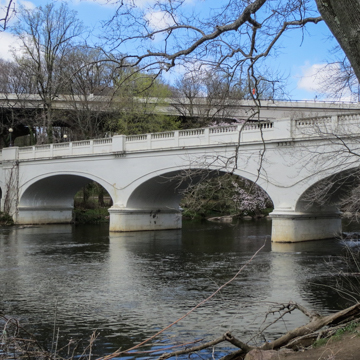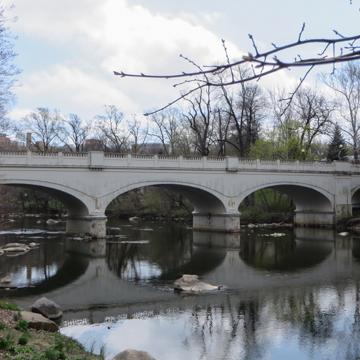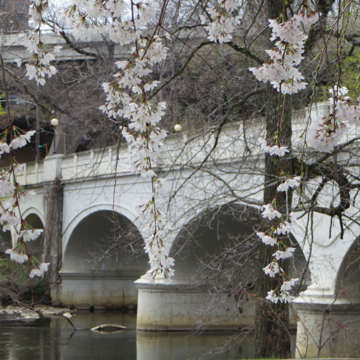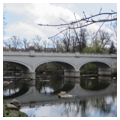The 353-foot bridge of eight arches, an early example of reinforced-concrete construction, contained a pipe that carried water from Porter Reservoir on Concord Pike to the Wilmington filter station. The first of many concrete highway bridges in Delaware, it used a variety of early reinforcement methods: latticed and Melan-type rolled I-beams as well as Thacher bars, the last named for the noted Edwin Thacher of the New York City firm, Concrete-Steel Engineering Company, which designed some 300 reinforced-concrete bridges between 1895 and 1904. This bridge was meant to spur development on Wilmington's northeast side. Constant internal leaking led to a recent reconstruction of the bridge, generally along the lines of its original appearance. Downstream, a pattern of ripples marks the site of Barley Mill Dam, which served a millsite on the west bank—scene of the first milling on the Brandywine (before 1687) and rebuilt in the mid-eighteenth century. A millstone survives as a lone relic of those early days.
You are here
Van Buren Street Bridge and Aqueduct
1906, Concrete-Steel Engineering Company, with Theodore A. Leisen. 1997 rebuilt. Van Buren St. over Brandywine Creek
If SAH Archipedia has been useful to you, please consider supporting it.
SAH Archipedia tells the story of the United States through its buildings, landscapes, and cities. This freely available resource empowers the public with authoritative knowledge that deepens their understanding and appreciation of the built environment. But the Society of Architectural Historians, which created SAH Archipedia with University of Virginia Press, needs your support to maintain the high-caliber research, writing, photography, cartography, editing, design, and programming that make SAH Archipedia a trusted online resource available to all who value the history of place, heritage tourism, and learning.







